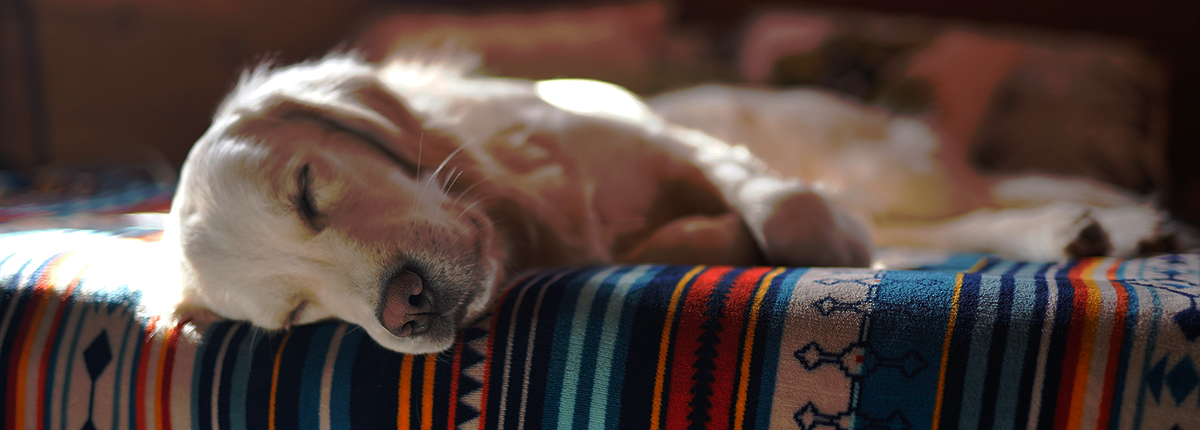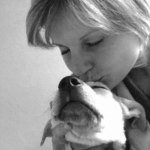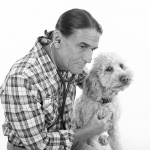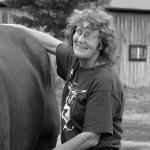There are a few things that you can do at home to prepare the environment for your elderly, ill or disabled pet.
A few goals to keep in mind: To maintain a safe, secure, and comfortable environment. This can be done by providing good traction for your pet to safely get around without slipping on smooth flooring.
Some non-skid footing options include:
1 ) Area rugs with non-skid backing and carpet
2) Carpet runners
3) Yoga mats – cut to size if needed and can be used under food and water dishes, under beds and on stairs.
4) Interlocking rubberized squares usually 12″x 12″ in packs.
Dr. Buzby’s toe grips can be applied to your dog’s nails to give them traction they need while walking on slippery flooring.
Make sure to keep your pet’s toenails and fur in between toes trimmed, this helps improve gripping ability and body mechanics when rising and walking.
Booties – there are various ones on the market – you must evaluate to see if it will hinder or help your dog get around. Provide night lights at you pet’s eye level, or leave lights on, if possible, for added safety.
In the event that you need to keep your dog confined to a specific area of the house below are a few options that you can safely use:
1) Baby Gates
2) Exercise Pens – “X-Pens” (you can configure to form many different shapes or clip several pens together) X-pens can provide secure and cozy “safe haven” for your pet. If your pet is urinary incontinent then you can place plastic tarp down to protect carpets since it is now a waterproof area.
Bedding
There are some excellent commercial pet beds, be sure to go in person to buy the bed so that you can feel it and see if its a good fit (vs buying a bed online).
1) Bed/bedding must be thick enough so that your dog’s body isn’t contacting the floor
2) Egg-crate or Memory foam can be a great base for a bed, this usually provides adequate bedding
3) be sure to check the material inside of the bed (for example: beds filled with cedar chips sound good but they tend to pack down and be very hard and uncomfortable, they are also non-washable)
4) Some pets like a nest-like bed with “bolsters,” or tunnel-like (my dogs tend to prefer this style of bed)
5) Crib mattresses can make great pet beds (many are waterproof as well)
6) Mesh beds on short PVC legs can be great for urinary incontinent dogs wince the urine flows through the mesh and does sit underneath your dog while they rest
7) Make sure to keep the pet beds in common areas of the house where your pet can still be part of the action. Pets still need their attention and interaction with the family. With that being said, try to honor your pet’s normal preferred areas and try to make comfortable beds available there as well. Keep in mind that in a busy household, some pets prefer a quiet space to comfortably rest.
8) Waterproof the beds with a plastic bag over inside core underneath a blanket so that your pet is not laying directly on the plastic
Cleaning and Washing your pet
1) If your dog soils themselves always blot, rather than wipe affected areas. Use a soft cloth or 100% cotton (since it is least abrasive, round 100% cotton makeup remover pads work well)
2) If you wash your pet make sure to use gentle dog specific cleansers/shampoos and warm water and always make sure to rinse well
Feeding
1) For some pets it is important to keep them eating (check with your veterinarian to make sure that you are offering the right foods at the correct amounts and feeding intervals.
2) Keep offering new and different things – including items they used to not like since many times they will eat things they used to not like (but keep in mind that sometimes they will no longer eat what they used to)
3) Offer small frequent meals so that they do not overeat and get an upset stomach
4) Warm the food to room temp (not as high as their body temps of 100–102)
5) Broths such as Chicken broth (no onion) to help entice your pet to eat or drink
6) For some dogs you can raise food dishes to height between elbow and shoulder
7) For the extra picky eater consider hand feeding
8) Blend the food into a gruel or baby food consistency (Grind/blend their favorite canned food or kibble)
9) Using water fountains or adding broth, tuna water or clam juice to the water to encourage drinking
These are just some basic changes you can make to help your pet be more comfortable and happy.




